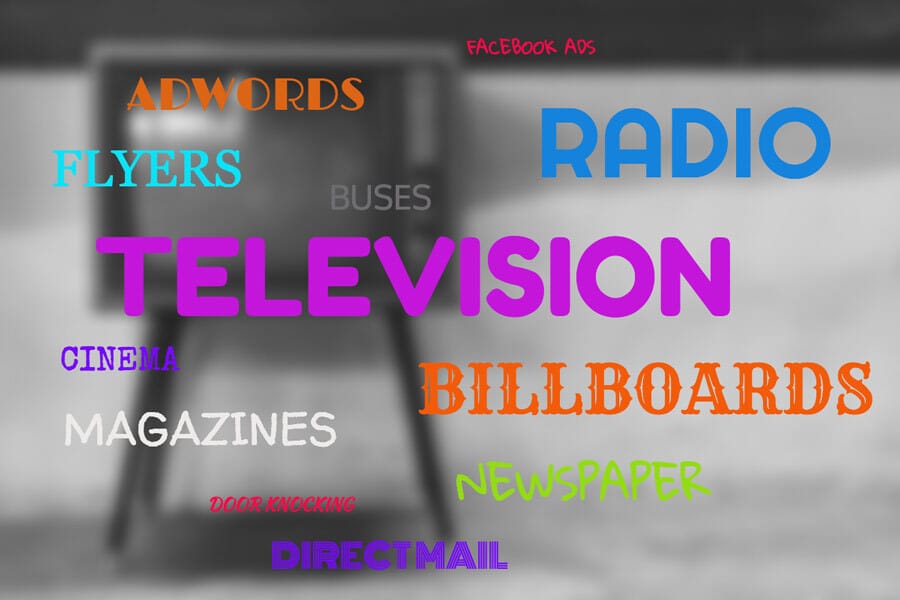Zoe, the answer depends on your definition of advertising.
Are you talking…
- Media selection. The delivery vehicle of your message (passive or intrusive)? Television, radio, newspaper, magazines, Adwords, Facebook ads, flyers, billboards, buses, cinema, email, direct mail, door knocking… If you say the right thing, all advertising delivery vehicles work to some degree.
- The type of campaign you choose. Sale advertising (short-term) vs. customer bonding (long-term)? Are you looking for instant gratification, a big day or do you wish to create a big business?
- The message you deliver. Will your ads be about your business, your products and services or the customer?
Variables
- The population of your market.
- The size of your ad budget.
In a market of 160,000 people, $30,000 allows you access to intrusive media 52-weeks a year. In a market of 3,500,000 people, it does not.
- Your product or service purchase cycle. How often are people in the market for what you sell? People buy coffee and food daily, and window coverings every six or more years. So, you’ll see faster results for coffee and fast food than you will for curtains and blinds.
How often do people buy from your business?
- The depth of your courage. Few business people are willing to advertise as hard as they should. Which means, unrestrained growth is available in most business categories. In my experience, the biggest growth goes to the brave.
How brave are you?
Back to your question.
I’m going to take a punt you are referring to media selection.
Here are three specific examples.
In this instance, radio could be your most effective option. Maybe television if you can find a program that runs weekly and is off prime.
The most effective delivery vehicle is different for each business. Market population and size of ad budget are the two big variables you need to take into account.
Again, all advertising delivery vehicles work to some degree.
There is no one right answer.
You need to look at every business and every market individually.
Only then can you determine the most effective advertising for that business.
My clients currently use radio, television, Adwords, flyers and direct mail. Each client’s advertising plan is unique.
But if you are an owner-operated business,
and you have ample ad budget for your market,
a customer-focused ad,
booked to run 52-weeks a year,
on intrusive media (*radio or television),
will produce great results.
(Assuming you deliver all you promise in your ads)
Craig Arthur
Wizard of Ads Australia
*Long-term, radio puts its nose in front of television due to
- Listener pattern predictability.
- Lack of visual images, which allows the ad to conjure a different mental image for every listener.
- Cost per person per year. You can reach the same listener 3 times a week, 52-weeks a year for $1, when you know how to book radio long-term.
- Can You Concisely Define “Marketing” Please? – Garry W - April 9, 2021
- Grow Your Business With a Courageous Offer - March 25, 2021
- 9 Things to Remember When Scheduling Media for Business Growth - March 10, 2021

